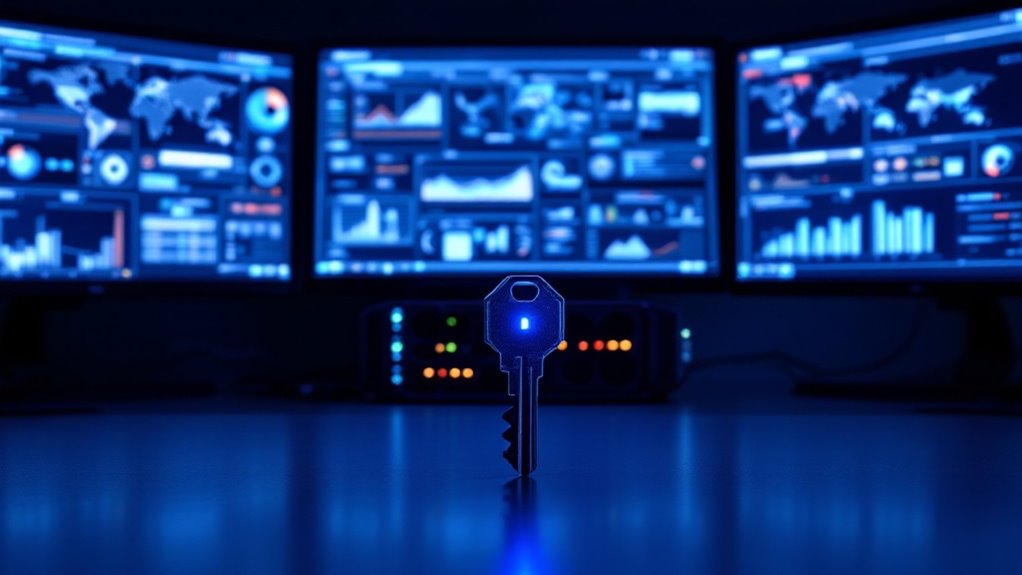Protecting against crypto malware demands vigilance across multiple fronts. A robust defense strategy combines updated software patches, strong passwords, and two-factor authentication like YubiKeys. Systems need constant monitoring for unusual fan activity or sluggish performance that could signal unauthorized mining. Quick quarantine of infected devices prevents further spread, while regular backups enable swift recovery. Understanding these evolving threats and maintaining healthy skepticism toward unexpected communications opens the door to stronger cybersecurity practices.

As cryptocurrency values surge and plummet like a digital roller coaster, cyber criminals are releasing an arsenal of sophisticated malware designed to hijack computing resources and steal digital assets. From cryptojacking parasites that secretly mine coins to ransomware that holds data hostage, these digital predators lurk in the shadows of the internet, waiting to pounce on unsuspecting victims through compromised websites, infected downloads, and cleverly disguised phishing emails. The malware often targets Monero cryptocurrency due to its anonymous features.
The impact of crypto malware feels like a vampire slowly draining both computing power and electricity. Systems wheeze and strain under the weight of unauthorized mining operations, while cooling fans whir frantically like tiny helicopter blades trying to prevent hardware meltdown. Organizations watch helplessly as productivity evaporates and energy bills soar, while individuals discover their devices have become unwitting soldiers in a cybercriminal's cryptocurrency mining army. Advanced attackers are now employing proof-of-storage cryptojacking techniques to conceal their physical impact on devices.
Fighting back requires a multi-layered defense that combines both high-tech shields and common-sense practices. Like a medieval castle's complementary protective features, modern security demands up-to-date software patches, robust passwords that aren't written on sticky notes, and two-factor authentication that acts as a second drawbridge against intruders. Using hardware tokens like YubiKeys provides the strongest form of two-factor protection for cryptocurrency accounts.
Regular file backups serve as an insurance policy, while white-listing approved applications helps keep the digital drawbridge secure against unauthorized programs.
The battle against crypto malware has evolved into a high-stakes game of cat and mouse. As security teams deploy artificial intelligence to spot unusual system behavior, criminals respond with shape-shifting code that slithers past traditional defenses.
When suspicious activity is detected, organizations must act swiftly – quarantining infected devices faster than a medieval village isolating plague victims. In the aftermath, forensic analysis reveals how the attack succeeded, while system restoration from clean backups helps operations resume.
The future promises even more sophisticated threats, as criminals adapt their tactics to target cloud resources and exploit emerging technologies. Yet with vigilance, regular security updates, and a healthy dose of skepticism toward unexpected attachments, organizations and individuals can greatly reduce their risk of falling victim to these digital bandits.
Frequently Asked Questions
How Can I Detect if My Computer Is Already Infected With Crypto Malware?
A computer infected with crypto malware typically shows high CPU/GPU usage, overheating, slow performance, unusual network activity, and suspicious software behavior. Regular system monitoring and resource tracking can identify these warning signs.
Can Crypto Malware Spread Through USB Drives and External Storage Devices?
Yes, crypto malware can actively spread through USB drives and external storage devices. Many variants are specifically designed to propagate via removable media, infecting new systems when infected USB devices are connected.
Are Mac Computers Immune to Crypto Mining Malware Attacks?
No, Mac computers are not immune to cryptomining malware attacks. Malicious actors actively target macOS systems through vulnerabilities, bootleg software, and tainted applications, making Macs susceptible to cryptojacking and mining malware infections.
What Happens to My Computer's Performance When Crypto Malware Is Running?
When crypto malware runs, a computer experiences severe performance deterioration, including high CPU usage, system slowdowns, overheating, increased power consumption, and reduced responsiveness. Network speeds may also decrease due to mining activities.
Can Crypto Malware Steal My Cryptocurrency Wallet Credentials and Private Keys?
Yes, crypto malware can steal wallet credentials and private keys through keyloggers, clipboard hijackers, and stealer malware. These malicious programs capture sensitive information when users access their cryptocurrency accounts or make transactions.









